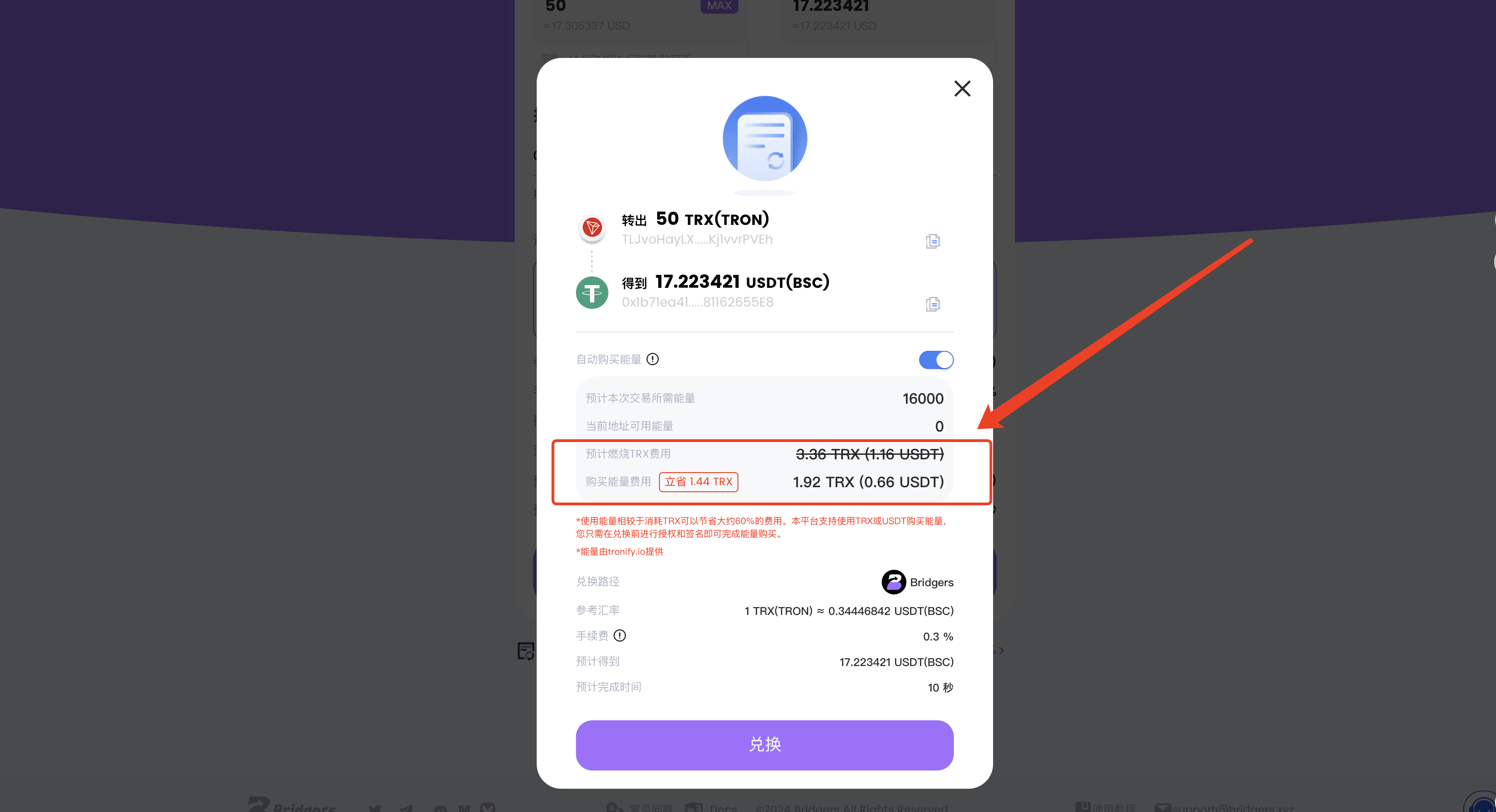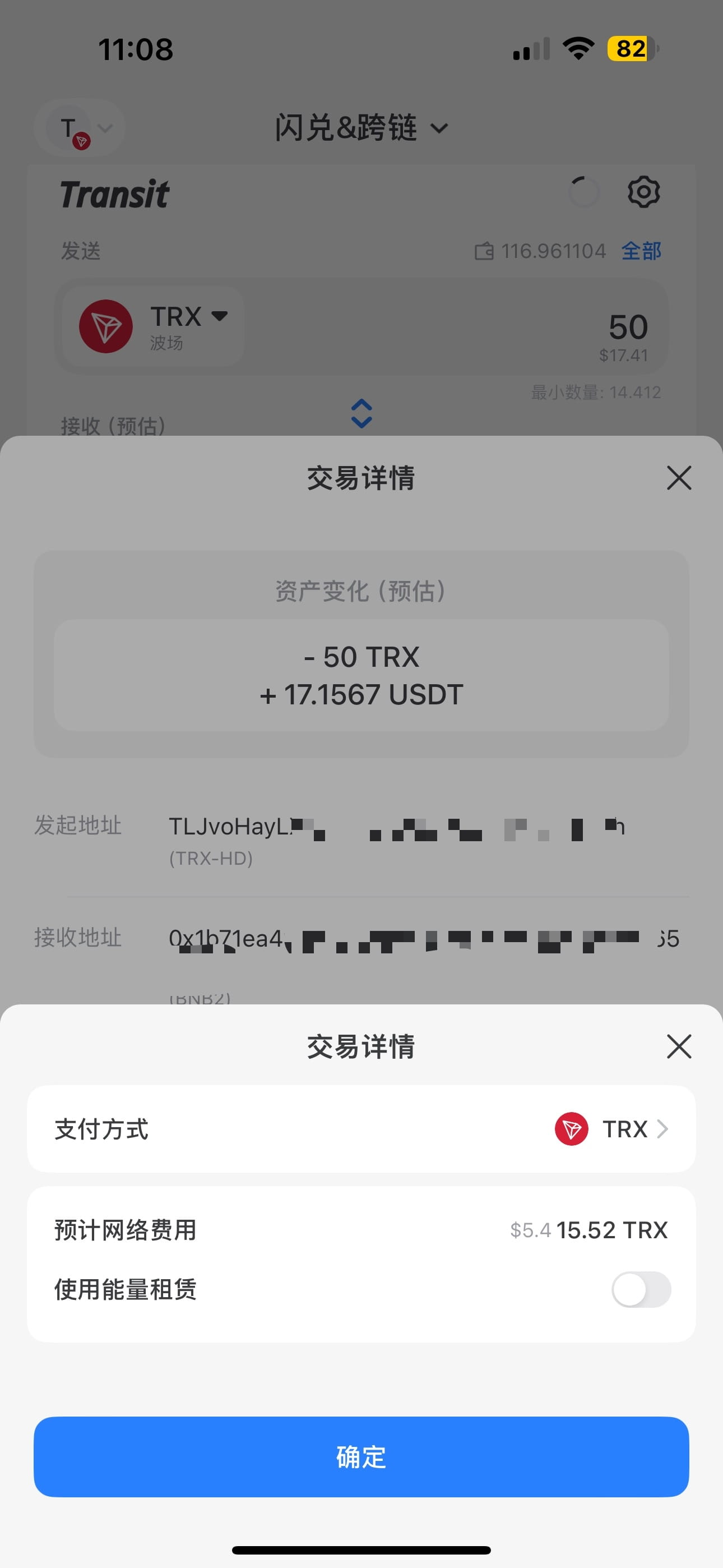Recently, during a cross-chain exchange operation, I inadvertently discovered a hidden cost-saving opportunity in the 'energy leasing' section of the TRON chain - exchanging the same amount of TRX through different platforms can result in noticeable differences in the USDT received. This phenomenon sparked my in-depth exploration of the TRON energy mechanism and cost control, and I want to share my findings with everyone, hoping you can spend less unnecessary money and gain more.
A small story about cross-chain practice: Is there a 'black box' in energy leasing?
When using the Bridgers platform to cross-chain exchange TRX to USDT on BSC, I found that its built-in tronify energy leasing service allows me to obtain all the energy needed for this operation with just 1.92TRX. In contrast, the same amount in the mainstream wallet TokenPocket surprisingly costs 7.57TRX, which is almost 4 times more!


This is not an isolated case; it has been the same after several transactions. Why do the leasing costs differ so much on different platforms for the same chain and demand? Next is my 'truth exploration' process.
Understand the TRON energy mechanism in one minute
Bandwidth: Used for simple transfer operations, many scenarios are free.
Energy: Specifically for smart contract calls, such as decentralized exchanges, NFT operations, etc.
There are three common ways for ordinary users to acquire energy:
Directly exchange TRX (convenient but expensive)
Freeze/stake TRX (suitable for low-frequency, long-term holders)
Lease from third parties (flexible and suitable for frequent or temporary contract operations)
Reasons behind the price differences on different platforms
After observation and experience, 'cheap' is actually the result of the platform's mechanism and the matching of supply and demand for services. For example, tronify adopts a more optimized matching and fee strategy, attracting more energy suppliers and demanders, resulting in overall lower leasing prices. TokenPocket, as a wallet, has its own leasing resources built-in, so a higher price is not surprising.
Conclusion: Choose the right platform, and energy will be more worthwhile!
Practical tips: How to reduce your TRON energy costs
When performing contract calls, cross-chain operations, etc., it is advisable to compare several energy leasing service platforms;
Do not blindly trust the 'built-in' prices of wallets; hands-on experience is often the best method for cost comparison.
High-frequency operation users can try freezing some TRX to obtain energy long-term;
Different platforms support different energy leasing plans, so occasionally check announcements to avoid pitfalls or spending unnecessary money.
Open suggestions
Every user's needs and transaction frequencies are different, and the 'most cost-effective' plan is not unique. It is recommended that everyone try and compare more, choosing the energy acquisition method that suits them best in different scenarios, making every operation on TRON 'worth the money spent'.
(The above content is a personal experience sharing, not investment advice, please be aware of the risks when participating.)#Tron